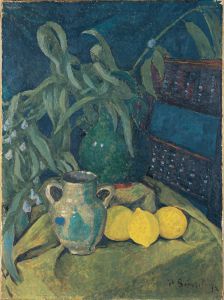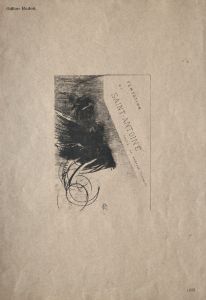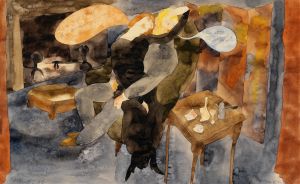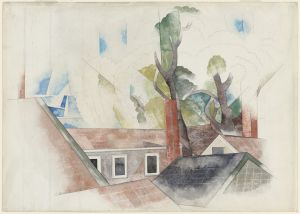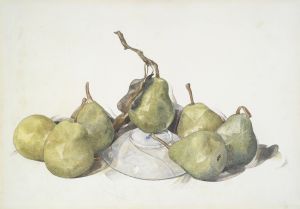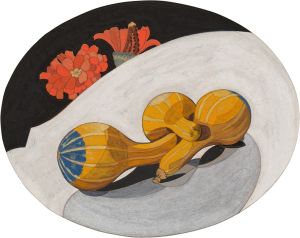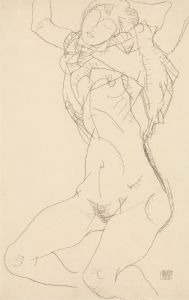
Sunflower
A hand-painted replica of Charles Demuth’s masterpiece Sunflower, meticulously crafted by professional artists to capture the true essence of the original. Each piece is created with museum-quality canvas and rare mineral pigments, carefully painted by experienced artists with delicate brushstrokes and rich, layered colors to perfectly recreate the texture of the original artwork. Unlike machine-printed reproductions, this hand-painted version brings the painting to life, infused with the artist’s emotions and skill in every stroke. Whether for personal collection or home decoration, it instantly elevates the artistic atmosphere of any space.
Charles Demuth's "Sunflower" is a notable work within the American modernist movement. Created in 1926, this painting exemplifies Demuth's unique approach to combining elements of precisionism with a personal, almost intimate, exploration of his subjects. Demuth, who was born in 1883 in Lancaster, Pennsylvania, is often associated with the precisionist movement, which emphasized clean lines, geometric forms, and a focus on industrial and architectural subjects. However, his work also frequently incorporated more organic and personal themes, as seen in "Sunflower."
"Sunflower" is a watercolor and graphite on paper, a medium that Demuth mastered and frequently employed throughout his career. The painting depicts a single sunflower, rendered with meticulous attention to detail and a keen sense of composition. The flower is presented in a close-up view, allowing the viewer to appreciate the intricate structure of its petals and the complex patterns within its center. The background is kept minimal, ensuring that the sunflower remains the focal point of the piece.
Demuth's use of watercolor in "Sunflower" showcases his ability to manipulate the medium to achieve both precision and fluidity. The delicate washes of color and the careful application of graphite lines create a sense of depth and texture, bringing the sunflower to life on the paper. This technique reflects Demuth's broader artistic practice, where he often blended elements of realism with abstraction to create works that were both visually striking and deeply personal.
The choice of a sunflower as the subject of this painting is significant. Sunflowers are often associated with themes of vitality, growth, and the natural world, which contrasts with the industrial subjects that dominated much of Demuth's other work. This juxtaposition highlights Demuth's versatility as an artist and his ability to find beauty and meaning in a variety of subjects. Additionally, the sunflower may hold personal significance for Demuth, reflecting his own experiences and emotions.
Throughout his career, Demuth was influenced by a range of artistic movements and styles, including Cubism, Futurism, and Post-Impressionism. These influences are evident in "Sunflower," where the precise lines and geometric forms of the petals and leaves echo the principles of precisionism, while the fluidity and vibrancy of the watercolor reflect the influence of Post-Impressionist artists. Demuth's ability to synthesize these diverse influences into a cohesive and distinctive style is one of the hallmarks of his work.
"Sunflower" is part of the collection at the Whitney Museum of American Art in New York City, which houses a significant number of Demuth's works. The painting is celebrated for its technical mastery, its emotional depth, and its contribution to the development of American modernism. It stands as a testament to Demuth's skill as a watercolorist and his ability to imbue everyday subjects with a sense of beauty and significance.
In summary, Charles Demuth's "Sunflower" is a masterful example of American modernist painting, showcasing the artist's precisionist techniques and his ability to convey personal and emotional depth through his work. The painting remains an important piece within Demuth's oeuvre and a significant work within the broader context of American art history.







